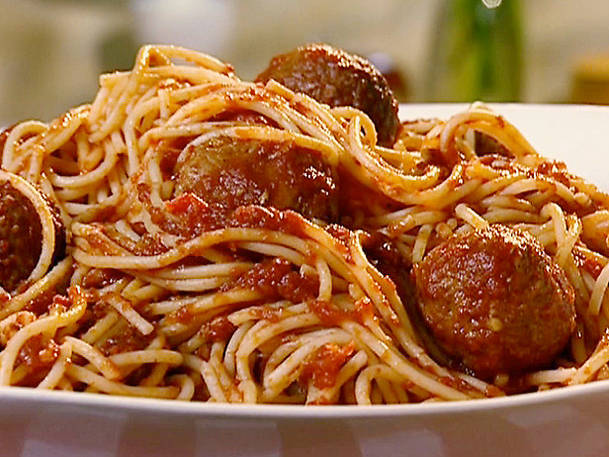


According to a much quoted truism from playwright Neil Simon, “there are two laws in the universe: the law of gravity and everyone likes Italian food.” A meal at restaurants like Il Mulino [2] in Greenwich Village, Tony’s [3] in St. Louis, Rosebud [4] in Chicago (any of them), Damian’s [5] in Houston, or Dan Tana’s [6] in West Hollywood is likely to reinforce that.
But, Simon’s Italian food is not what is served at the refined ristoranti of Rome or Florence, or anywhere in Italy. What he was referring to – and what we typically think of as Italian food – is not Italian. It is Italian-American.
Most of what is called Italian food here comes from the immigrants from southern Italy and Sicily who arrived from 1880 to 1924. They made up about 80% of all Italian immigrants. Interestingly, about half of the dishes that would become Italian staples in America originated in Naples. Pizza, pasta with clams, and spaghetti with marinara sauce are just three of the many. Though very few immigrants actually came from Naples itself, that city had long dominated the culture and cuisine of the Italian south. It was easily the largest in Italy at the time, was a busy port, and had long been the capital of an independent country that covered the south and Sicily. So, “what is described abroad as ‘Italian’ cooking is really Neapolitan cooking,” opined Waverly Root in The Food of Italy in 1971.
Italian food in America is largely based on the foods the immigrants had eaten during religious holidays and other celebrations – in and around Naples and elsewhere – much less on what they ate daily. That was often a dreary array of vegetable soups, greens, beans and poor-quality bread. In Italy, they seldom ate pasta, as it was too expensive. They rarely ate meat. They only ate seafood if they lived near the coast.
But, with American wages, commercially made pasta and meat were easily affordable and became regular parts of their diet. Like nearly all immigrants before and afterwards, the Italians quickly grew to include American beef-steak and the crisp, German-born lager beer.
They ate far better than they had in Italy. But, many of the ingredients were not available or not as good quality, so these immigrants had to adapt. Vegetables became less important over the years, reflecting trends in the broader American landscape. Their food was necessarily different than that of Italy. A national Italian-American cuisine emerged before the Second World War and became widely embraced. It had developed on its own, and continued to do so with the occasional dish from a restaurant in Italy added to the repertoire - like fettuccine Alfredo, saltimbocca, insalata Caprese, and tiramisu.
Food today in Italy is similar, but is something else. The often significant differences between Italian and Italian-American cooking can be described as harmony versus abundance. Italian-American cooking uses far more garlic, more sauce, much more cheese and meat. Fewer vegetables are used. The food is also “more cooked,” like the popular baked pasta dishes here such as baked ziti and manicotti. Pasta is an entrée, which is almost never seen in Italy; it is typically the first course (after the antipasti that is). Fewer seasonal and fresh ingredients are used here. The long-cooked and copious tomato sauces, along with the large amount of cheese, help to mask this fact. Overall, the food is much more robust here. Another difference is the vast array of distinct regional and local cuisines and traditions that endure throughout Italy that are not really found here.
These days, though, the delineation between Italian and Italian-American can often be tough. More contemporary Italian dishes and a more truly Italian ethos have been found here during the past couple of decades as chefs have traveled more frequently to Italy, excellent Italian food products have been more readily available, and locally sourced substitutes have improved dramatically. But, still, nearly all of the time, when you are going out for Italian, you are going out for Italian-American.
That’s certainly not a bad thing at all, though.
* Mike Riccetti is an experienced food writer in the midst of a book project about Italian food in America. He contributes articles about Italian restaurants on a national basis for Examiner.com [7]. An earlier version of this article previously appeared in The Galveston County Daily News.
Source URL: http://440468.6bgr9ubv.asia/magazine/dining-in-out/articles-reviews/article/italian-and-italian-american-cooking-harmony-vs
Links
[1] http://440468.6bgr9ubv.asia/files/meatballspaghetti011310677492jpg
[2] http://www.ilmulino.com/
[3] http://www.saucecafe.com/tonys/
[4] http://www.rosebudrestaurants.com/
[5] http://www.damians.com/
[6] http://www.dantanasrestaurant.com/
[7] http://www.examiner.com/italian-restaurants-in-national/mike-riccetti